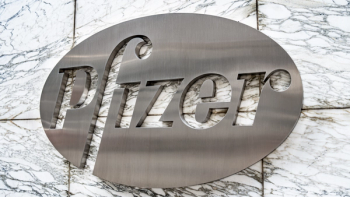Key Takeaways
- New FDA Indication: Kerendia (finerenone) is now approved to reduce cardiovascular death, heart failure (HF) hospitalization, and urgent HF visits in adults with HF and left ventricular ejection fraction ≥40%.
- Efficacy Backed by Phase III Trial: FINEARTS-HF showed a 16% relative reduction in composite cardiovascular outcomes versus placebo over a median 32-month follow-up.
- Manageable Safety Profile: While associated with increased hyperkalemia, Kerendia had fewer serious adverse events compared to placebo and lowered hypokalemia risk.
The FDA has approved Bayer’s Kerendia (finerenone), a non-steroidal, selective mineralocorticoid receptor antagonist, to reduce the risk of cardiovascular death, hospitalization for heart failure (HF), and urgent HF visits in adults with HF and a left ventricular ejection fraction (LVEF) of ≥40%. According to the company, approval is based on results from the Phase III FINEARTS-HF trial (NCT04435626), which showed that patients treated with Kerendia experienced statistically significant and clinically meaningful reductions in cardiovascular events, irrespective of comorbidities or prior hospitalization.1
How Did Kerendia Perform in the Phase III FINEARTS-HF Trial?
“The FDA’s approval of finerenone expands treatment options for patients with heart failure with a left ventricular ejection fraction of ≥40% – a large and growing group of patients with a poor prognosis,” said Scott D. Solomon, MD, professor of medicine, Harvard Medical School, director, clinical trials outcomes center, Mass General Brigham, chair, study executive committee, in a press release. “Based on the clinical efficacy we saw in the FINEARTS-HF study, finerenone can become a new pillar of comprehensive care, improve clinical outcomes and offer new hope to these patients in the US with persistent high unmet medical needs.”
FINEARTS-HF Trial Design and Key Efficacy Endpoints
- The randomized, double-blind, placebo-controlled, multicenter, event-driven FINEARTS-HF trial evaluated the efficacy and safety of Kerendia in approximately 6,000 patients with symptomatic HF with an LVEF of ≥40%, measured by any modality within the past year, who were receiving diuretic treatment for at least 30 days prior to randomization.
- The primary endpoint of the trial was the composite of cardiovascular death and total HF events, defined as hospitalizations for HF or urgent HF visits.
- Key secondary endpoints included, but were not limited to, time to death from any cause, time to first occurrence of a composite renal endpoint, and change in total symptom score as measured by the Kansas City Cardiomyopathy Questionnaire.1,2
- Results showed that Kerendia demonstrated a 16% relative reduction in the composite risk of cardiovascular death and worsening HF events compared to placebo over a median follow-up of 32 months.
- There were 842 total worsening HF events in the treatment arm compared to 1,024 in the placebo arm.
- Cardiovascular death occurred in 8.1% of patients in the treatment arm compared to 8.7% in the placebo arm.
Safety Profile and Clinical Context
- Around 20.4% of patients who received at least one dose of Kerendia and 20.6% of those who received the placebo discontinued treatment for reasons outside of death.
- Serious adverse events were reported in 38.7% of the treatment group and 40.5% of the placebo group.
- Kerendia was associated with a higher incidence of hyperkalemia but a lower risk of hypokalemia.3
According to Bayer, an estimated 3.7 million people in the United States are currently living with HF LVEF ≥40%, which results in over 500,000 hospitalizations annually.1
“Building on our longstanding expertise in bringing innovative science to the cardiovascular space, today’s approval of finerenone in heart failure with a left ventricular ejection fraction of ≥40% marks an important milestone in Bayer’s commitment to improving the lives of patients with this condition,” said Christine Roth, EVP, global product strategy and commercialization, pharmaceuticals leadership team, Bayer, in the press release. While often balancing multiple comorbidities such as hypertension and atrial fibrillation, physicians have faced limited proven treatment options for these complex patients. In the FINEARTS-HF study, finerenone reduced the occurrence of cardiovascular events in patients with this common form of heart failure, and we are excited about the potential of finerenone to emerge as a foundational therapy that can contribute to addressing patients’ tremendous needs.”
References
- U.S. FDA Approves Finerenone for New Indication in Patients with Heart Failure with Left Ventricular Ejection Fraction of ≥ 40%. Bayer. July 14, 2025. Accessed July 14, 2025. https://www.bayer.com/media/en-us/us-fda-approves-finerenone-for-new-indication-in-patients-with-heart-failure-with-left-ventricular-ejection-fraction-of--40/
- Study to Evaluate the Efficacy (Effect on Disease) and Safety of Finerenone on Morbidity (Events Indicating Disease Worsening) & Mortality (Death Rate) in Participants With Heart Failure and Left Ventricular Ejection Fraction (Proportion of Blood Expelled Per Heart Stroke) Greater or Equal to 40% (FINEARTS-HF). Clinicaltrials.gov. Accessed July 14, 2025. https://clinicaltrials.gov/study/NCT04435626?term=FINEARTS-HF&rank=1
- Finerenone in Heart Failure with Mildly Reduced or Preserved Ejection Fraction. The New England Journal of Medicine. September 1, 2024. Accessed July 14, 2025. https://www.nejm.org/doi/full/10.1056/NEJMoa2407107





